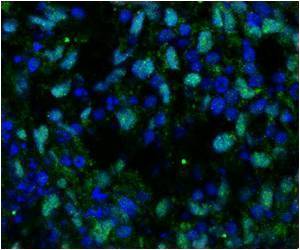RNA releasing pill in the stomach could offer a new way to administer vaccines or to deliver therapies for gastrointestinal disease.

‘RNA releasing pill in the stomach could offer a new way to administer vaccines or to deliver therapies for gastrointestinal disease.’





“Nucleic acids, in particular RNA, can be extremely sensitive to degradation particularly in the digestive tract. Overcoming this challenge opens up multiple approaches to therapy, including potential vaccination through the oral route,” says Giovanni Traverso, the Karl van Tassel Career Development assistant professor of mechanical engineering at MIT and a gastroenterologist at Brigham and Women’s Hospital. In a new study, Traverso and his colleagues showed that they could use the capsule they developed to deliver up to 150 micrograms of RNA — more than the amount used in mRNA Covid vaccines — in the stomach of pigs.
Traverso and Robert Langer, the David H. Koch Institute Professor at MIT and a member of MIT’s Koch Institute for Integrative Cancer Research, are the senior authors of the study. Alex Abramson PhD ’19 and MIT postdocs Ameya Kirtane and Yunhua Shi are the lead authors of the study, which appears today in the journal Matter.
Oral drug delivery
For several years, Langer’s and Traverso’s labs have been developing novel ways to deliver drugs to the gastrointestinal tract. In 2019, the researchers designed a capsule that, after being swallowed, can place solid drugs, such as insulin, into the lining of the stomach.
Advertisement
In 2021, the researchers showed that they could use the capsule to deliver large molecules such as monoclonal antibodies in liquid form. Next, the researchers decided to try to use the capsule to deliver nucleic acids, which are also large molecules.
Advertisement
These particles, which can deliver RNA with high efficiency, are made from a type of polymer called poly(beta-amino esters). The MIT team’s previous work showed that branched versions of these polymers are more effective than linear polymers at protecting nucleic acids and getting them into cells. They also showed that using two of these polymers together is more effective than just one.
“We made a library of branched, hybrid poly(beta-amino esters), and we found that the lead polymers within them would do better than the lead polymers within the linear library,” Kirtane says. “What that allows us to do now is to reduce the total amount of nanoparticles that we are administering.”
To test the particles, the researchers first injected them into the stomachs of mice, without using the delivery capsule. The RNA that they delivered codes for a reporter protein that can be detected in tissue if cells successfully take up the RNA.
The researchers found the reporter protein in the stomachs of the mice and also in the liver, suggesting that RNA had been taken up in other organs of the body and then carried to the liver, which filters the blood.
Next, the researchers freeze-dried the RNA-nanoparticle complexes and packaged them into their drug delivery capsules. Working with scientists at Novo Nordisk, they were able to load about 50 micrograms of mRNA per capsule, and delivered three capsules into the stomachs of pigs, for a total of 150 micrograms of mRNA.
This is more than the amount of mRNA in the Covid vaccines now in use, which have 30 to 100 micrograms of mRNA.
In the pig studies, the researchers found that the reporter protein was successfully produced by cells of the stomach, but they did not see it elsewhere in the body.
In future work, they hope to increase RNA uptake in other organs by changing the composition of the nanoparticles or giving larger doses. However, it may also be possible to generate a strong immune response with delivery only to the stomach, Abramson says.
“There are many immune cells in the gastrointestinal tract, and stimulating the immune system of the gastrointestinal tract is a known way of creating an immune response,” he says.
Immune activation
The researchers now plan to investigate whether they can create a systemic immune response, including activation of B and T cells, by delivering mRNA vaccines using their capsules. This approach could also be used to create targeted treatments for gastrointestinal diseases, which can be difficult to treat using traditional injection under the skin.
“When you have systemic delivery through intravenous injection or subcutaneous injection, it’s not very easy to target the stomach,” Abramson says. “We see this as a potential way to treat different diseases that are present in the gastrointestinal tract.”
Source-Eurekalert









